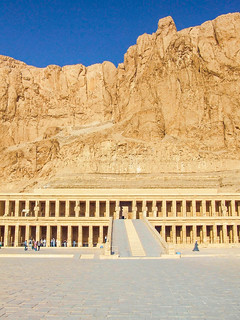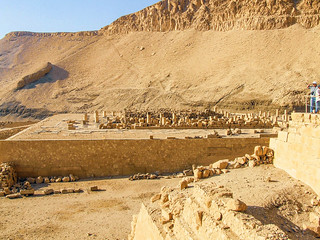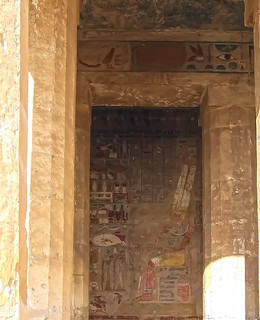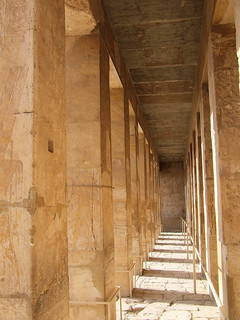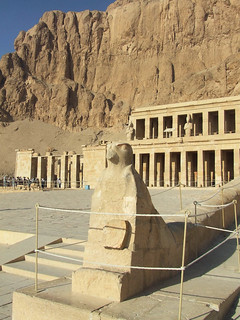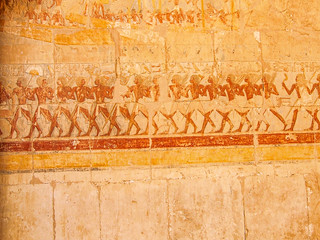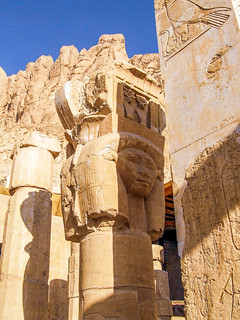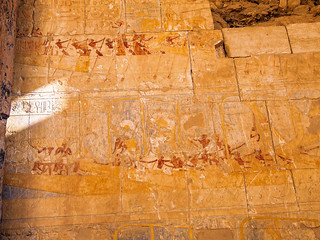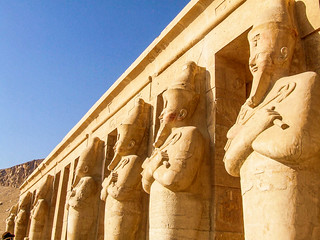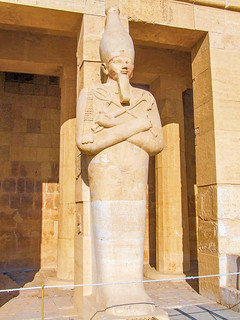About Hatshepsut
Hatshepsut, the elder daughter of the 18th-dynasty king Thutmose I and his consort Ahmose, was married to her half brother Thutmose II, son of the lady Mutnofret. Since three of Mutnofret’s older sons had died prematurely, Thutmose II inherited his father’s throne about 1492 bce, with Hatshepsut as his consort. Hatshepsut bore one daughter, Neferure, but no son. When her husband died about 1479 bce, the throne passed to his son Thutmose III, born to Isis, a lesser harem queen. As Thutmose III was an infant, Hatshepsut acted as regent for the young king.
For the first few years of her stepson’s reign, Hatshepsut was an entirely conventional regent. But, by the end of his seventh regnal year, she had been crowned king and adopted a full royal titulary (the royal protocol adopted by Egyptian sovereigns). Hatshepsut and Thutmose III were now corulers of Egypt, with Hatshepsut very much the dominant king. Hitherto Hatshepsut had been depicted as a typical queen, with a female body and appropriately feminine garments. But now, after a brief period of experimentation that involved combining a female body with kingly (male) regalia, her formal portraits began to show Hatshepsut with a male body, wearing the traditional regalia of kilt, crown or head-cloth, and false beard. To dismiss this as a serious attempt to pass herself off as a man is to misunderstand Egyptian artistic convention, which showed things not as they were but as they should be. In causing herself to be depicted as a traditional king, Hatshepsut ensured that this is what she would become.
www.britannica.com
